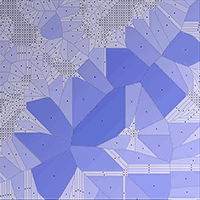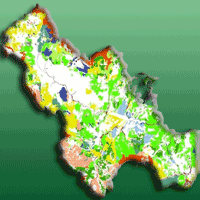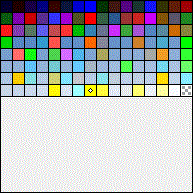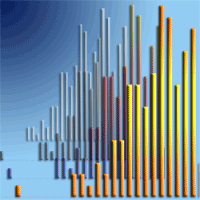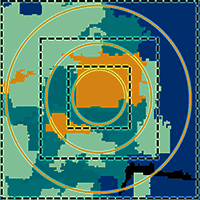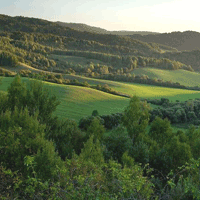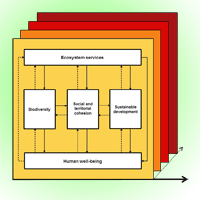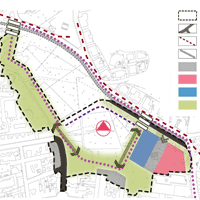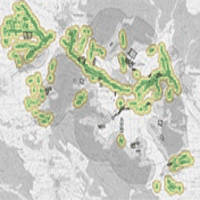
Communicating spatial planning decisions at the landscape and farm level with landscape visualization
Bartlett Warren-Kretzschmar , Christina Von Haaren
iForest - Biogeosciences and Forestry, Volume 7, Issue 6, Pages 434-442 (2014)
doi: https://doi.org/10.3832/ifor1175-007
Published: May 19, 2014 - Copyright © 2014 SISEF
Research Articles
Collection/Special Issue: RegioResources21
Spatial information and participation of socio-ecological systems: experiences, tools and lessons learned for land-use planning
Guest Editors: Daniele La Rosa, Carsten Lorz, Hannes Jochen König, Christine Fürst
Abstract
Landscape visualizations have the potential to support participatory environmental planning at different spatial scales and decision levels from international to farm level. However, it is yet unclear what specific demands are relevant for visualization on the different decision levels. In this context more knowledge is needed about visualization objectives and the respective tasks, intended effects and suitable techniques for the specific levels. Especially the farm level has been neglected in research, although farmers make many decisions that affects public interests in the visual landscape. Farmers need to communicate these decisions to the public in an understandable way. The question of how visualization can support participation in the planning process at the municipal level is examined in this paper by drawing on the findings of the Interactive Landscape Plan Koenigslutter, Germany (IALP) about the preferences and reactions of citizens to visualizations used in the landscape planning process at the local decision level. On this basis, we examined the applicability and differences of the findings for the farm level. Furthermore, in order to explore visualization opportunities at the farm scale, the farm management system MANUELA was used as an example of an information platform that could serve as a basis for farm scale visualizations. By transferring landscape planning results to the farm level, we developed recommentations about the application of visualization, intended effects and appropriate techniques at the farm scale. The general findings for the municipal level show that visualization can improve participation by providing participants with a common image of the planning proposals for discussion and collaborative decisions. Different visualization methods offer different capabilities for supporting participation in the different planning phases. At the farm scale, 2D visualizations and diagrams are often sufficient to communicate information to customers about farm performance for providing ecosystem services. They may consist of maps and supporting information that is easily generated from GIS data. However, for a higher (more interactive) level of communication and participation activities, such as discussions with affected neighbors about land use changes or the integration of citizens’ proposals, more sophisticated visualization techniques would be required. Visualization techniques are needed that farmers can use to easily simulate visual impacts of land use changes at the landscape scale.
Keywords
Landscape Planning, Participatory Planning, Landscape Visualization, Farm Scale, Ecosystem Services, MANUELA
Authors’ Info
Authors’ address
Christina Von Haaren
Institute of Environmental Planning, Leibniz University Hannover, Herrenhäuser Str. 2, D-30419 Hannover (Germany)
Corresponding author
Paper Info
Citation
Warren-Kretzschmar B, Von Haaren C (2014). Communicating spatial planning decisions at the landscape and farm level with landscape visualization. iForest 7: 434-442. - doi: 10.3832/ifor1175-007
Academic Editor
Marco Borghetti
Paper history
Received: Oct 31, 2013
Accepted: Apr 05, 2014
First online: May 19, 2014
Publication Date: Dec 01, 2014
Publication Time: 1.47 months
Copyright Information
© SISEF - The Italian Society of Silviculture and Forest Ecology 2014
Open Access
This article is distributed under the terms of the Creative Commons Attribution-Non Commercial 4.0 International (https://creativecommons.org/licenses/by-nc/4.0/), which permits unrestricted use, distribution, and reproduction in any medium, provided you give appropriate credit to the original author(s) and the source, provide a link to the Creative Commons license, and indicate if changes were made.
Web Metrics
Breakdown by View Type
Article Usage
Total Article Views: 61105
(from publication date up to now)
Breakdown by View Type
HTML Page Views: 50633
Abstract Page Views: 3857
PDF Downloads: 4772
Citation/Reference Downloads: 73
XML Downloads: 1770
Web Metrics
Days since publication: 4228
Overall contacts: 61105
Avg. contacts per week: 101.17
Citation Metrics
Article Citations
Article citations are based on data periodically collected from the Clarivate Web of Science web site
(last update: Mar 2025)
Total number of cites (since 2014): 12
Average cites per year: 1.00
Publication Metrics
by Dimensions ©
Articles citing this article
List of the papers citing this article based on CrossRef Cited-by.
References
Enhanced visualization of landscapes and environmental data with three-dimensional sketches. PhD thesis, Universität Konstanz, Switzerland, pp. 107.
Gscholar
Bedingungen für den Einsatz einer Software für Naturschutzberatung und -dokumentation auf landwirtschaftlichen Betrieben [Requirements for the use of software in nature conservation planning and documentation on farms]. PhD thesis, Institute for Environmental Planning, Leibniz University Hannover, Germany, pp. 65. [in German]
Gscholar
Computer-aided visualization: possibilities for urban design, planning, and management. In: “Planning Support Systems: Integrating Geographic Information Systems, Models, and Visualization Tools” (Brail RK, Klosterman RE eds). ESRI Press, Redlands, CA, pp. 309-359.
Gscholar
Some truths with maps: a primer on symbolization and design. Association of American Geographers, Washington, DC, USA, pp. 129.
Gscholar
From information to participation. Interactive landscape visualization as a tool for collaborative planning. University Press, Swiss Federal Institute of Technology, Zurich, Switzerland, pp. 224.
Gscholar
Visualizing climate change - a guide to visual communication of climate change and developing local solutions. Routledge, London, UK, pp 511.
Gscholar
Landscape architecture into the 21st century - methods for digital techniques. In: “Digital Landscape Architecture 2010” (Buhmann E, Pietsch M, Kretzler E eds). Wichmann Verlag, VDE Verlag GmbH, Berlin and Offenbach, Germany, pp. 2-26.
Gscholar
Interaktiver Landschaftsplan Königslutter am Elm [Interactive landscape plan Koenigslutter am Elm]. Naturschutz und Biologische Vielfalt 24, Bonn Bad Godesberg, Germany, pp. 269. [in German]
Gscholar
What role does visualization play in communication with citizens? A field study from the interactive landscape plan. In: “Trends in Real-Time Landscape Visualization and Participation” (Buhmann E, Paar P, Bishop ID, Lange E eds). Herbert Wichmann Verlag, Heidelberg, Germany, pp. 156-167.
Gscholar
Visualisierungen in der interaktiven Landschaftsplanung einsetzen: Spektrum der technischen Möglichkeiten und Anwendungesbeispiele [Using visualization in landscape planning: spectrum of technical opportunities and examples]. In: “Leitfäden zur interacktiven Landscaftsplanung [Guidelines for Interactive Planning]”. Bundesamt für Naturschutz, Bonn - Bad Godesberg, Germany, pp. 32. [in German]
Gscholar

